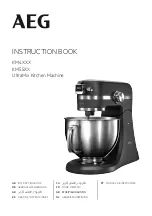
DEI
VCOMP
CSC_HD1
CSC_SD
GRPX
(0)
NF
CHR_DS
(NF)
SC_2
SC_1
SC_5
(WRBK)
CHR_US_AUX
GRPX
(1)
GRPX
(2)
HD
VENC_D
(DVO1)
SD
VENC
OCP
MMR
I/F
HDMI DVO1
DVO2
SD
DAC
VIN1
VIN0
VBI
Data
BLEND
COMP
L4
32 bit
L3_1
128 bit (2D)
4
2
2
P
4
2
2
P
4
2
2
P
4
2
2
P
4
2
2
P
422P
420T
4
2
2
P
4
2
0
T
422T
420T
422P
420T
RGB
RGB
R
G
B
R
G
B
R
G
B
4
2
0
T
C
S
C
_
W
B
2
Primary
Input
Path
(HQ)
Aux
Input
Path
(LC)
BLEND
HD
VENC_D
(DVO2)
422P
420T
422P
420T
L3_2
128 bit (2D)
VPDMA
422T
420T
422-444
444-422
422-444
422-444
VBI IF
In
d
e
p
e
n
d
e
n
t
T
ra
n
s
c
o
d
e
In
p
u
t
P
a
th
1
422T
420T
In
d
e
p
e
n
d
e
n
t
T
ra
n
s
c
o
d
e
In
p
u
t
P
a
th
0
CHR_DS1
CSC_VIP1
SC_4
422-444
444-422
VIP_PARSER1
CHR_DS0
RGB
CHR_DS1
CSC_VIP0
SC_3
422-444
444-422
VIP_PARSER0
CHR_DS0
RGB
CSC_HD0
4
2
0
/2
T
4
2
0
/2
T
4
2
0
/2
T
1
2
3
4
5
6
7
8
VPI Control Addresses
1,2,3,4,5,6,7,8
SC_M/GRPX
CIG
cf
BLEND
sc_m_wrbk_select
vcomp_pip_select
1/2 3
4
5 6/7
1
2
3
0
1
vcomp_main
disable
3
2
1
dvo2_select
1
3
2 4-7
sdvenc_select
1
0
1
0
1
0
nf_bypass
HD
DAC
BLEND
HD
VENC_A
VBI IF
C
H
R
_
U
S
-P
2
C
H
R
_
U
S
_
P
1
C
H
R
_
U
S
_
P
0
4
C
H
R
_
U
S
_
S
E
C
0
C
H
R
_
U
S
_
S
E
C
1
422S
422S
420T
422P
420 Semi-planar tiled/
non-tiled (separate Luma
and Chroma buffers).
Cb/Cr interleaved in
Chroma buffer.
422 Interleave non-tiled
(Luma and Chroma
Interleaved in the same
buffer).
RGB
All types of RGB formats
described in VPDMA
section.
422S
422 Semi-planar tiled/
non-tiled (separate Luma
and Chroma buffers).
Cb/Cr interleaved in
Chroma buffer.
Description of the Subsystem
51
SPRUHI7A – December 2012 – Revised June 2016
Copyright © 2012–2016, Texas Instruments Incorporated
High-Definition Video Processing Subsystem (HDVPSS)
1.1.6.5
Tri Display and Video Capture
As can be seen in
, as long as there is no transcode operations, video display and video
capture are independent. In this usage, up to four video sources can be captured (two per video input
port) while display is active.
To improve the quality of captured video sources, the Noise Filter (NF) can be used on captured video
(see
). This Noise Filter is a memory to memory operation, meaning that captured video goes
to memory, and then is read back into to the Noise Filter, operated on, and written back to memory. The
below diagram shows this flow (with display active).
Figure 1-10. HDVPSS Tri Display with Video Capture
















































